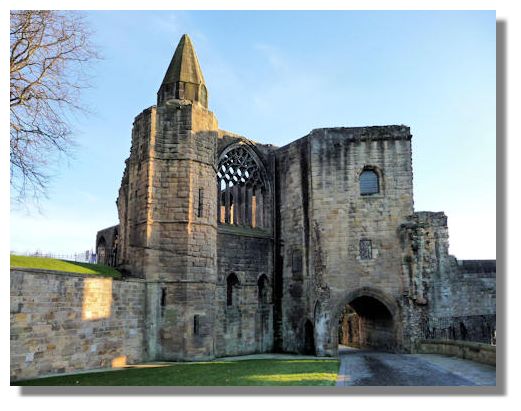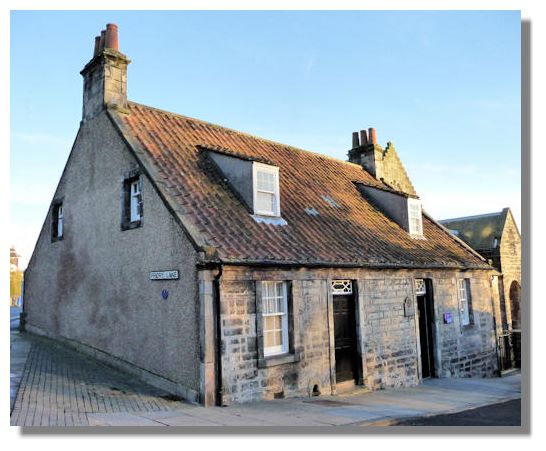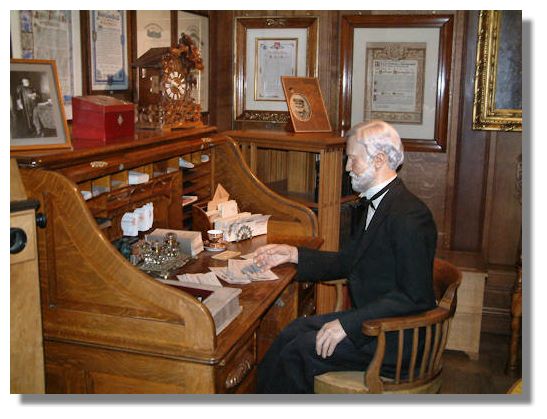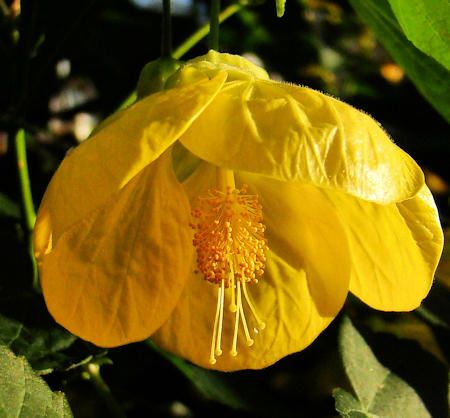The Rampant Scotland Newsletter includes a number of photographs which illustrate the weather and the seasons, plus the flora and fauna of the current week around Scotland. This separate "colour supplement" displays some more pictures, in a larger format. Here is this week's crop of Scottish views!
In addition to Dunfermline Abbey, over the years extensive monastic buildings were built to the south of the abbey church, with cloisters, dormitories, refectories and a calefactory, or warming house. This was the only part of the building which had any heating, which must have made life very hard for the Benedictine monks who lived there. Over the centuries, as a result of royal patronage, the abbey flourished and expanded. An important role of the building was to provide accommodation for important visitors, including the reigning monarchs. A large guest house was built and King James VI's wife, Anne of Denmark, was granted the guest house in 1589. It was remodelled to provide a palace for her use and the building is now known as Dunfermline Palace. The future King Charles I was born there in 1600. The gatehouse (pictured above) is the best preserved part of the extensive palace buildings.
The American industrialist and entrepreneur Andrew Carnegie was born in this modest cottage (now a museum) in Dunfermline in 1835. Carnegie emigrated to USA in 1848 and got a job in a textile firm as a bobbin boy but eventually became a clerk in the Pennsylvania Railroad Company. With hard work, talent, luck - and a streak of ruthlessness - he worked his way up the company to become head of the firm. He exploited the concept of the railway sleeping car but made his first million dollars (by the time he was 30) by shrewd purchases of stock at low prices and selling at a vast profit.
Carnegie moved into the iron industry and during the Civil War (1861-1865) he expanded the railways, using iron for bridges instead of wood. Investments in oil followed, then his first steelworks in 1867 (one of the first in America). In the 1880s he was the leading iron and steel producer in the country. But by 1900, having decided that "The man who dies rich dies in disgrace" he sold out to the United States Steel Corporation and set about distributing his vast fortune. He set up 2,500 libraries in Britain and North America and all four of the older Scottish universities received bequests, as did Carnegie Mellon University. His home town of Dunfermline was not forgotten either ("the most sacred spot to me on earth"). By the time he died in Massachusetts in 1919, he had made bequests amounting to over $350 million during his lifetime. The picture above is a replica of one of Carnegie's offices which has been created in the museum extension adjoining his birthplace.
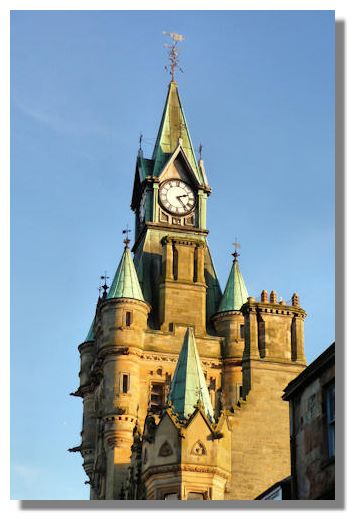
The City Chambers in Dunfermline has been described in an architectural guide to Fife as "an elaborate French Gothic concoction with Scottish overtones, its Fettes-type clock steeple surging up from its narrow corner site to celebrate the mercantile prosperity of 19th-century weaving." The Fettes referred to in this description is a famous private school for boys in Edinburgh.
Among other endowments in Dunfermline by Andrew Carnegie, Pittencrieff House (dating from around 1635) and gardens were bought for the town. It is said that, as a child, Carnegie had been ejected from the gardens by the then owner. Pittencrieff House is now a museum of local life. In the extensive gardens stands a fine statue to Carnegie and the impressive main entrance gates are dedicated to his wife, Louise.
The hot-house adjoining Pittencrieff House has a large collection of plants. As a result of its heating, delicate flowers such as this golden yellow abutilon are in flower even in December.If you want to look back at earlier editions of this Colour Supplement, there is an Index Page
